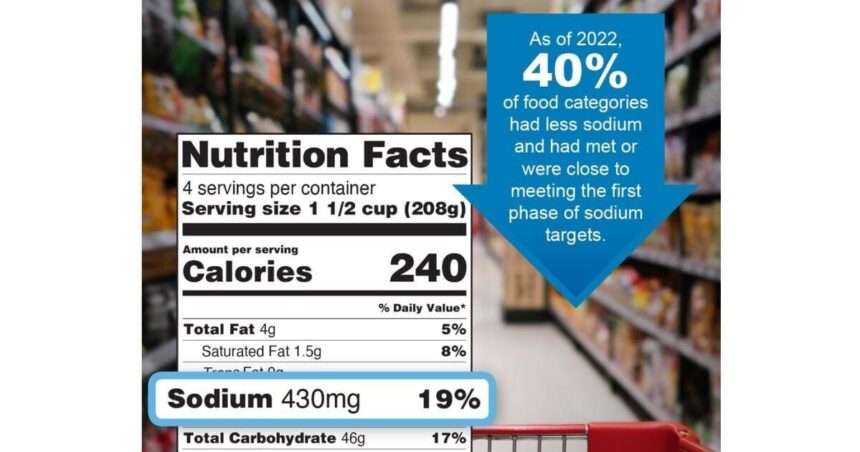Key Takeaways
-
After making progress in reducing sodium levels in U.S. foods, the FDA is now advancing to phase 2 of its voluntary sodium reduction targets
-
The new targets aim to achieve a daily sodium intake of 2,750 milligrams (mg) per day per person
-
This is still lower than the U.S. Dietary Guidelines recommendation of 2,300 mg daily
THURSDAY, Aug. 15, 2024 (HealthDay News) — Encouraged by the success of its efforts to lower salt consumption in Americans, the U.S. Food and Drug Administration has announced Phase II of the program.
The U.S. Dietary Guidelines advise consuming no more than 2,300 milligrams (mg) of sodium per day, equivalent to about one teaspoon of salt.
Excessive salt intake is a major risk factor for high blood pressure, heart disease, and stroke.
However, Americans typically exceed the recommended intake, averaging around 3,400 mg/day before 2021, according to a press release from the FDA.
Phase 1 of the FDA’s voluntary sodium-reduction targets for the food industry were introduced in 2021, and data from 2022 suggest that “around 40% of the initial Phase I targets have been achieved or are close to being achieved, demonstrating early success.”
This success has prompted the launch of Phase II.
“If finalized, the new set of voluntary targets would help lower the average individual sodium intake to about 2,750 milligrams per day,” stated the FDA.
The new initiative is expected to align with the U.S. Department of Agriculture’s efforts to reduce sodium in school meals.
“Reducing sodium in the food supply has the potential to be one of the most significant public health initiatives in a generation,” mentioned Jim Jones, FDA Deputy Commissioner for Human Foods. “The early progress we’re seeing with sodium reduction in certain foods is promising and indicates the impact our overall nutrition strategy can have on society’s well-being.”
The FDA states that 70% of daily sodium intake comes from food manufacturing and commercial food preparation, rather than salt shakers.
“Robust scientific evidence supports decreasing sodium intake from current levels,” the FDA stated. “Lowering sodium consumption has the potential to prevent numerous premature deaths and illnesses in the future by reducing the risk of heart disease and stroke.”
According to the American Heart Association (AHA), even the recommended 2,300 mg sodium limit per day may be too high for some individuals.
“The ideal limit is no more than 1,500 per day for most adults, particularly those with high blood pressure,” the AHA stated. “Reducing just 1,000 milligrams a day can improve blood pressure and heart health.”
Opt for fresh foods over processed options whenever possible, as processed foods often contain added salt.
Some of the most sodium-rich foods include popular American favorites like burgers, burritos, tacos, deli meats, pizza, chicken dishes, pasta dishes, commercial soups, and salty snacks.
However, there are several simple ways to decrease daily sodium intake, as suggested by the AHA:
-
Choose “low-sodium” versions of foods
-
Read labels for terms like “soda, “sodium,” and the symbol “Na” on items such as canned soups and condiments
-
Opt for fresh fruits and vegetables, or if buying canned or frozen, ensure they are labeled “low salt”
-
Select unsalted nuts, seeds, dried beans, peas, and lentils
-
Discuss commercial salt substitutes with your doctor, as they often contain high levels of potassium instead of sodium
-
Request low-sodium options when dining out
-
Above all, remove the salt shaker from your table and resist adding salt while cooking. Herbs and spices can provide flavor without compromising health
“It may take time for your taste buds to adjust to a lower-sodium diet,” advised the AHA. “However, there are delicious low-sodium meal options available.”
More information
The Academy of Nutrition and Dietetics offers additional information on low-salt diets.
SOURCES: U.S. Food and Drug Administration, news release, Aug. 15, 2024; American Heart Association
What This Means For You
Remove the salt shaker from your table and support the FDA in its renewed efforts to decrease daily dietary sodium intake.





